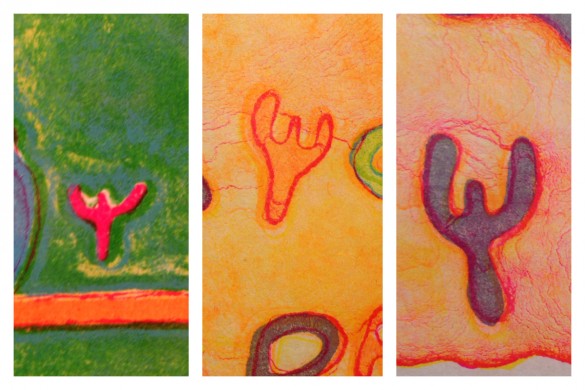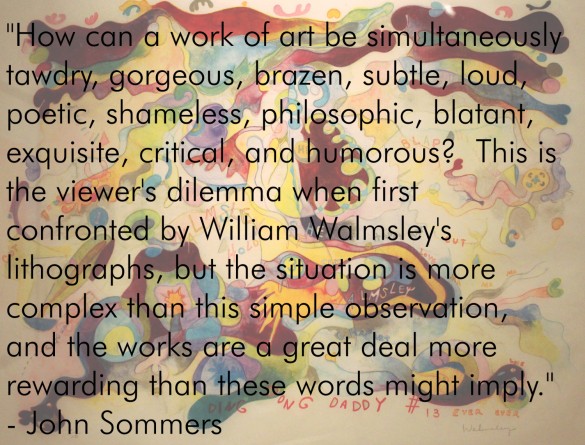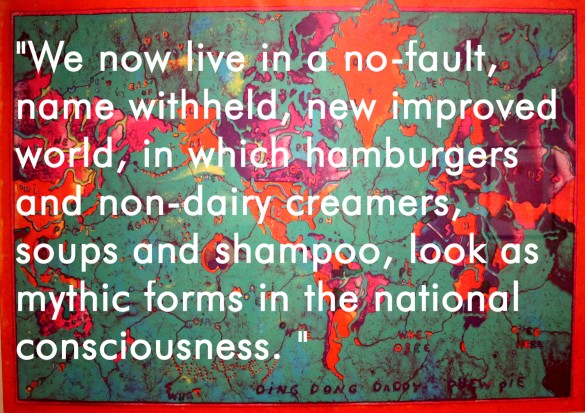The Prints of William Walmsley is an exhibition that makes you work a little bit harder to understand what it all means – the sometimes hidden meaning, image, or pun. At first glance you see a jumbled, confused mass of florescent colors, but as you look more deeply you begin to reassemble the work in your mind’s eye. You step closer, read the text within the image, examine the shapes and colors, then step back to see an entirely new image appear, either through enlightened meaning or in the literal sense. A few of the prints are like those old hidden image stereogram posters that were so popular in the 1990s. If you squint just a bit or let your focus relax, you may see something inside the jumble that was not there a moment before.
One of the prime elements in Walmsley’s artwork is that of irony. Walmsley’s sense of cynical irony is the vein running through the entire exhibition, from word association to composition to color juxtaposition and content. Many of the prints appear as a sort of vulgar alphabet soup or scandalous free-form poetry, surrounded by seductively organic shapes that resemble human anatomy. Each piece is a pun evaluating the human condition. And Walmsley, most of all, is the butt of the joke. Through self-deprecating humor, he exhibits his dissatisfaction with the world in its present human state, with the present ‘American’ state, and with the idea of self, offering his commentary on each and of man’s capacity for self-deception.

Another of the elements in the exhibition that warrants attention is the symbol above, found throughout many of the pieces. This altered ‘Y’ is Walmsley’s symbol for humanity and often appears at the end of his name, that of his alter ego, or at the beginning of the word ‘you’.
The words within the images are also integral to their meaning. If you write out just the words on a sheet of paper in relation to where they are in the composition of a piece, you are presented with a sort of free-form verse. Where the words and letters are within the composition, especially in the maps, are a commentary on those spaces. Walmsley tries to challenge our conventional ideas about love, fame, life, and death. His maps are a representation of mapping the human consciousness. They are fragmented, complex, and multi-dimensional, open to multiple interpretations, and focused on issues of sexuality, politics, and ecology.
Walmsley’s work forces us to wear many hats as viewers. We are asked to have a sense of humor, become dialecticians, to resolve unfamiliar color relationships, interpret poetic language, and unite it all visually into a coherent whole. Walmsley courageously took on the task of the artist as intrepid explorer. He takes risks in his work with the expectation of profound personal discovery. He is the avant-garde artist at its finest, antagonizing viewers by challenging traditional ideals of beauty and propriety. He came up in an era where the gauche was a sign of sincere expression, and ideal beauty was the epitome of fallacy; an idea imposed on the mind by society. He was anti-authoritarian, battling against the repressive standards of conventional taste, and his artwork is his vehicle to express it all. To get you to see his message and his commitment to the idea of freedom of expression, he exhibits an deep sense of irreverence, seeming to shout that nothing is sacred, not even art.





like
like II